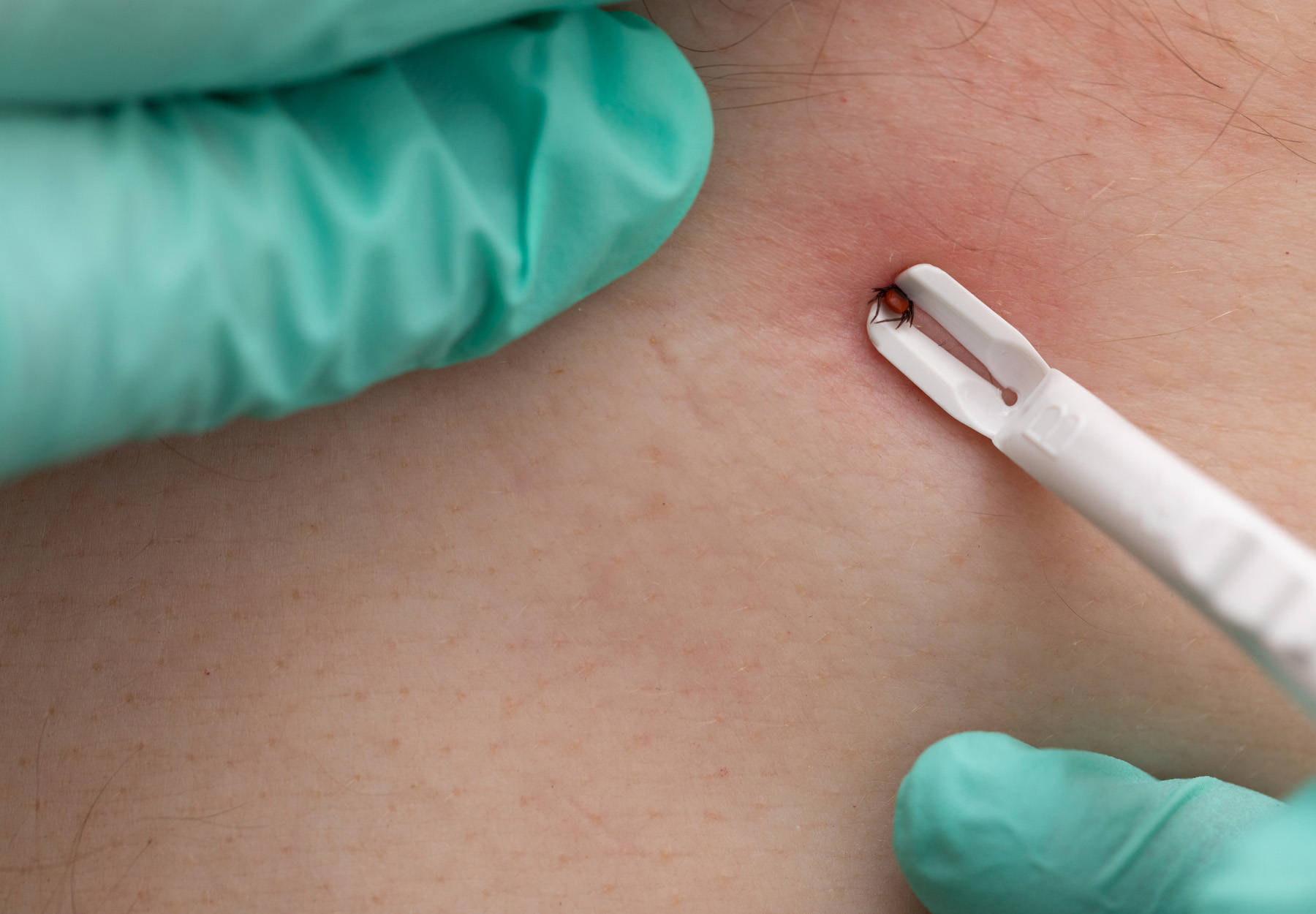Is an Antibody Test for Early Detection of Lyme Disease Feasible?
Recent study suggests a new test may help doctors detect Lyme disease during the early stages when treatment is likely to be more effective.

There is currently a scarcity of reliable laboratory tests for diagnosing tickborne diseases. However, a new test may help doctors detect Lyme disease during the early stages when treatment is likely to be more effective. That is the conclusion of a new study from researchers at the Tufts University School of Medicine that was published in The Journal of Clinical Investigation on March 15, 2022.
The Diagnostic Challenge
Lyme disease is caused by a class of bacterial parasites called Borrelia burgdorferi spirochetes that are transmitted to humans by ticks. Infection can affect multiple organ systems. Lyme disease can lead to debilitating long-term complications including arthritis, fatigue, mental impairment, and, in the most severe cases, attacks on the heart and brain tissue. When treated early with antimicrobial drugs, most victims fully recover—although harms may linger in 10 to 20 percent of cases.
In the US, Lyme disease is most prevalent in the Northeast and upper Midwest.
Lyme Disease Association (LDA) US Lyme Disease Reported Cases 1990-2019*

The number of reported cases of tickborne disease has more than doubled over the past decade and a half (although the rate of growth has slowed over the past two years due to the COVID-19 pandemic), according to the US Centers for Disease Control and Prevention (CDC). However, most experts believe that the public health burden of tickborne pathogens is considerably underestimated. Thus, while the CDC reports that there are approximately 30,000 to 40,000 cases of Lyme disease per year, a 2021 estimate based on insurance records suggests that the number of Americans who are diagnosed and treated for Lyme disease is around 476,000.
Limitations of Current Tickborne Disease Diagnostics
The discrepancy between reported and actual Lyme disease and other tickborne infections is due not only to limitations in surveillance and reporting systems but also the constraints of available diagnostics, including variability among laboratories, timing of specimen collection, suboptimal sensitivity during early infection, imperfect use of diagnostics (particularly in persons with low probability of disease), inability of a single test to identify coinfections in patients with acute infection, and the cumbersome nature of some assays that require specialized laboratories.
Current diagnostics, which rely heavily on serologic assays, are not particularly effective at distinguishing acute from past infection. “Traditional Lyme tests can stay positive for prolonged periods of time after treatment—years or even a lifetime,” notes Tufts study author Dr. Peter Gwynne in a press release on the study. “As a result, for some individuals suffering from symptoms that resemble long-term Lyme disease infection, clinicians are never sure whether the patient has persistent Lyme disease, was cured and then reinfected, or was cured and is suffering from something else.”
Another serious limitation is inability to detect the disease early when the infection is most treatable and reinfection can be diagnosed and prevented. Generally, Lyme disease is not diagnosed unless and until the victim develops the telltale bullseye rash associated with the disease. Unfortunately, the early treatment window is frequently closed by that point.
The Promise of Antibodies Detection of Tickborne Infections
Among the recent new developments offering the promise of improved detection of tickborne infections is the emergence of multiplex technology capable of detecting antibodies to thousands of epitopes, enabling identification and distinction among tickborne pathogens. The Tufts researchers say that they have identified such a test that detects an antibody that infected individuals produce against a nutrient that Borrelia burgdorferi acquires from the host. “The Lyme bacteria, despite being a very successful pathogen, is much more dependent than other bacteria on acquiring nutrients from its environment,” notes Gwynne. Tests to detect these nutrients could be the key to early diagnosis, the researchers suggest.
Specifically, the research team found that the Lyme Borrelia burgdorferi bacteria takes fats called phospholipids directly from its host surroundings and places them on its surface. They also determined that these phospholipids cause the body to create antibodies. These antibodies produced in response to phospholipids are different from the antibodies that most current Lyme disease tests detect.
Other Emerging Tests for Early Lyme Disease Detection
· The ZEUS ELISA Borrelia VlsE1/pepC10 IgG/IgM Test System;
· The ZEUS ELISA Borrelia burgdorferi IgG/IgM Test System;
· The ZEUS ELISA Borrelia burgdorferi IgM Test System; and
· The ZEUS ELISA Borrelia burgdorferi IgG Test System
In addition, antibodies testing is not the only emerging alternative to serologic modalities for early stage Lyme disease. There are also molecular tests for Borrelia burgdorferi commercially available, including, most recently, the T2 Biosystems T2Lyme Panel which received breakthrough device designation from the FDA in July 2022.
Best of all, these antibodies show up earlier after an infection occurs. “The antibodies also seem to develop much more quickly than traditional antibodies to the Lyme bacteria—likely because your body has previously created these autoantibodies and downregulated them,” noted Linden Hu, vice dean of research at the Tufts University School of Medicine, in the press release.
Another key finding: The body appears to clear the fat-related antibodies, aka autoantibodies, more quickly. Knowledge of this fact could potentially enable determination of how effective a treatment has been or if someone has become reinfected.
“Because of their quick increase and quick resolution with treatment, the anti-phospholipid autoantibodies may make it possible to tell whether treatment has eradicated the Lyme disease bacteria,” added Gwynne. “And they therefore also make it possible to tell if a patient with a prior infection now has a new infection.”
Next Steps
The Tufts research may prove a significant development in the effort to develop more effective laboratory tests for Lyme disease. Gwynne and Hu have a provisional patent pending describing the use of antiphospholipid antibodies for diagnosis of Lyme disease, which they suggest a diagnostic company could use to develop a commercially available version of the test within a couple of years.
Subscribe to Clinical Diagnostics Insider to view
Start a Free Trial for immediate access to this article